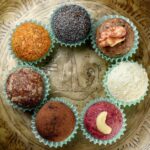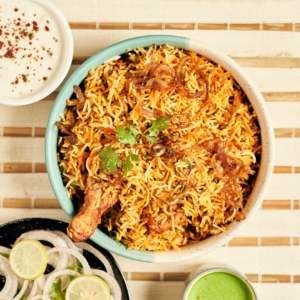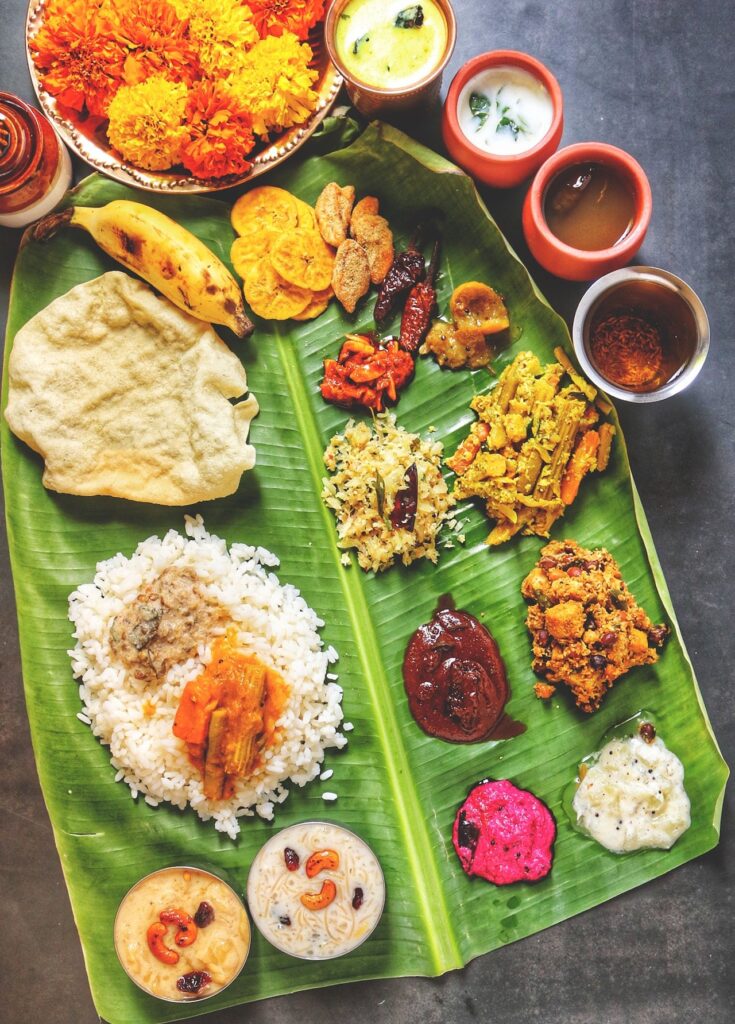
Kerala Breakfast Items to Taste in 2023
Food and travel remain closely connected, and there could be no more excellent method for diving profound into a vacation in Kerala than to attempt conventional food and Kerala Breakfast Items of 😊 Kerala. At the point when you request Food in Kerala, you will be welcomed happily and a gesture in the event that you are an outsider and this can likewise assist you with making a few companions who will clarify for you the subtleties behind the dish assisting you with adding the subtleties too to the enduring memory of your excursion by getting a charge out of neighborhood cooking.
At the point when you travel to 😊 Kerala eating with your fingers might be difficult to get going with like local people, notwithstanding, when you understand that it is the most effective way to totally partake in the conventional food of Kerala and value the preferences you will gradually adjust it. Taking a gander at a typical Indian dinner with such countless curries and side dishes itself will be overpowering not to mention utilizing your fingers to eat.
Tips for Eating Food in Kerala
It’s perfect and amenable to clean up before you plunk down to eat.
Just eat with your right hand. The left hand is viewed as messy as it’s held for capabilities related to going to the latrine.
Eat the bread (Chapati/Appam) first with a portion of the vegetable or meat dishes, then, at that point, eat the leftover vegetables or meat alongside the rice and daal. The reason for the side dishes is to add various flavors and surfaces to the food, so you ought to have a little part of any of these after each nibble of the primary dishes.
🙂 The main thing is to test each unique dish independently, to permit its singular attributes to be valued.
Be cautious with how much sambar/rasam you pour onto the rice. A lot of daal will bring about the rice becoming messy and it won’t keep intact appropriately. Too little daal and the rice will be tacky and bland.
Subsequent to eating, on the off chance that you’re a visitor in somebody’s home, hold on until everybody has completed getting up to clean up again to clean them.
Kerala is legitimately known as “God’s own country”. 🙂 The waterfront southern territory of India is famous for its flawless scene and beautiful excellence. A getaway can be very elating with the cooking improving the experience further.
The cooking of Kerala is impacted by the ages of intrusions and neighborhood accessibility of food. From the Muslims to Sicilian Christians, a significant effect is noticeable in the cooking.
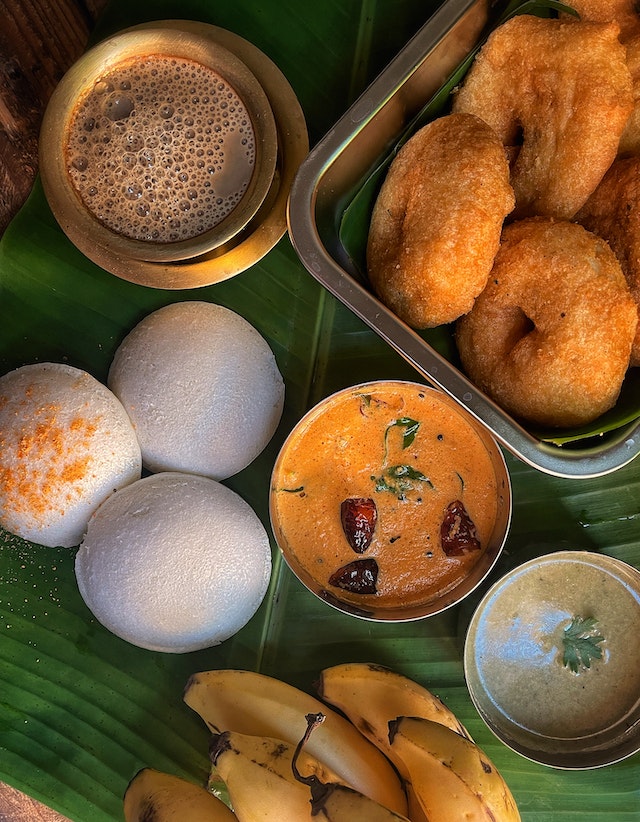
Over the long haul, the style of each has mixed to give the food of Kerala the ongoing structure.
A bountiful measure of flavors is accessible in Kerala.
Vasco Da Gama arrived in Kerala looking for flavors. The impact of flavors can be tracked down in the cooking. Being a waterfront state, ocean depths are well known.
Coming up next is a rundown of probably the most prominent food you can appreciate during your getaway in Kerala.
1. Malabar Biriyani:
The Mughal rule has spread the ubiquity of the Biriyani the whole way across the country. Each state has altered the rich and delightful Biriyani likewise. On a comparable note, the Malabar Biriyani is a fragrant Keralite rendition of the Mughlai guilty pleasure. You ought to relish a plateful of the rice and meat fiery joy. Wayanad is a delightful bumpy spot in Kerala.
2. Mussel Stir fry:
You totally can’t miss the outlandish assortment of ocean food sources accessible in Kerala. Mussels are marinated with flavors and stirred to set up the delightful recipe.
3. Kerala Fish Curry with Cassava:
Cassava is privately known as Kappa. It was presented by the Portuguese and has turned into a necessary piece of Kerala food. The harvest assists with making a velvety scrumptious sauce to cook the fish. Coconut milk and tamarind are added to the sauce for a different character. You wouldn’t find a comparable curry elsewhere.
4. Karimeen Pollichathu:
Fish is a necessary piece of Kerala food. The Pearl Spot Fish is marinated with flavors and heated in plantain leaves. The fiery joy is delicate to the point that it nearly dissolves in your mouth.
5. Prawn Theeyal:
Prawns are accessible richly in the seaside locale of Kerala. Prawns are cooked with broiled coconut and flavors to set up the scrumptious curry. The crunchy prawns are a luscious joy and the extraordinary dish is an unquestionable requirement.
6. Kerala Chicken Curry:
The Christian impact has prompted the prominence of chicken in Kerala. Coconut milk and flavors set up the rich hot curry which is very heavenly.
7. Beef Fry:
Beef is a most loved delicacy in Kerala. The meat is pan-seared in coconut oil with flavors to set up the lip-smacking heavenly dish. You wouldn’t find comparable planning elsewhere in the country.
8. Erissery:
Erissery is a famous vegetable curry made of pumpkins and lentils. Different flavors are utilized to give the flavor and taste. It is a fundamental piece of the Onam Sadhya feast. The hot curry can be a seriously ecstatic treat on the slopes of Munnar.
9. Idiyappam:
Idiyappam has steamed rice flour noodles. The steamed strands are exceptionally simple to process and similarly flavorful. They would handily liquefy in your mouth and are a lethal pair with any curry.
10. Malabar Parota:
The parota is made by blending flour in with salt, sugar, and oil. The delicate and firm parota is a lethal mix with all curries, particularly beef. Indeed, you could get Malabar Parota in pretty much every shop in India, however, the sensation of tasting bona fide Kerala food in Kerala is by and large an alternate encounter.
11. Appam:
Appam is an Indian flapjack made with rice. It is fresh at the edges and delicate and feathery in the center. You can appreciate it with any curry of your decision. It is so delicious in itself that it is very much a treat with coconut milk too.
12. Puttu:
Rice flour is steamed in an exceptional puttu steam chamber to set up the tasty Puttu. You can appreciate it with any curry. In any case, it is delightful to such an extent that you can appreciate it with ground coconut and banana also. It is a dangerous blend with curry of kadala or dark chickpeas. The Puttu can be made of ragi flour too.
13. Pazham Pori:
Indians love to nibble on squanders and each state has a modified assortment. In Kerala, banana wastes are a delightful bite. Ready bananas are covered with flour and seared. It is a brilliant mix of sweet and pungent flavors.
14. Payasam:
Payasam is a well-known smooth sweet of Kerala. It is extensively arranged into three assortments: milk, rice, and lentils. It is exceptionally flavorful and a treat for your sugar tooth.
In the event that you visit Kerala interestingly, this article might be helpful to find out about Kerala food sources and cooking. Kerala offers different Veggie lover and Non-Vegan food sources to travelers which are the combination of neighborhood produce and the bounties of the ocean.
Vegan food of Kerala is for the most part milder and blander in taste then again non-veggie lover food appreciates different flavors. The other specific reality of Kerala food is the use of oil and its serving style. For the most part, all food is prepared in coconut oil and served in banana leaves. The specific utilization of coconut oil can likewise be for dulling the hotness of flavors.
Each dish of Kerala has some particular history with wealth in health benefits and taste too. 🥰 Flavoring a few dishes of Kerala have a rich embodiment of flavors that portray its immense culture.
1. Kerala Dishes for Breakfast:
Puttu with kadala curry
Sambhar, dosa, and chutney
Pidiyan
Idiyappam
Kerala cooking offers numerous flavorful veggie lover breakfast dishes. Each dish contains a particular strategy for cooking. This morning meal is known as Kathaladakkal in the North Malabar region and Praathal in the remainder of Kerala.
2. Kerala Dishes for Lunch:
Sadya is a notable principal course of Kerala’s food. This principal course is decorated with the arrangement of curries, rice, sambar, parippukari, pachadi, khichdi, aviyal, puliyan, olan, kuttukari, kalan, Injikkari, rasam, paddadam, raita, a few kinds of deserts, payasam and so on. This dish will doubtlessly satisfy your appetite, even if it is a sizable amount in one bin however the significant thing is its making as it requires a specialist hand.
3. Kerala Dishes for Supper:
One of the most well-known dishes of 🥰 Kerala is its Biryani, called Malabar Biryani or Thalassery Biryani. It has an extraordinary smell due to the unique decision of rice for example Khaima rice and the technique for its arrangement.
4. Popular Dishes of Kerala:
In the vast majority of the South Indian states, rice is considered as the staple food of Kerala and the focal Kerala individuals lean towards Custard regularly known as Kappa. This Kappa is presented with fish curry or meat curry. Rice is considered a vital part of Kerala food in light of the fact that Keralites love parboiled rice and can devour it with at least one curry.
5. Popular Vegetarian Dishes of Kerala:
Kerala vegan dishes incorporate rice with one primary dish like rasam, sambar, puli-sherry, and so on. The main worry of Kerala food is coconut oil which is exceptionally utilized in a wide range of food. The well-known veggie lover dish of Kerala incorporates sambar, kaalan, thoran, aviyal, pulisherry, olan, puliinji, custard, and so forth. All vegan dishes frequently comprise of new flavors and the flavor and smell of these melted and squashed flavors are praiseworthy.
6. Popular Non-Vegetarian Dishes of Kerala:
Non-Vegan dishes of Kerala ordinarily incorporate stew, chicken fry, fish curry, fish fry, meat fry, prawn fry, zesty steamed fish, and numerous others.
7. Kerala Sweet Dishes:
In the part of desserts and sweets, Kerala is well known for hot or warm deserts. 🥰 Payasam is the most famous sweet of Kerala which is made of milk, coconut extricate, cashews, dry grapes, sugar, and so forth. However this Payasam can be made from various base constituents and be called various names like Paal Payasam produced using rice, Ari Unda produced using rice powder, Parippu Payasam produced using dal, and some more. In the arrangement of Payasam, Semia Payasam is the most popular in the Kerela abandons list. This dish is made of semia and milk.
This multitude of dishes utilizes white sugar as a base and jaggery or molasses as a typical improving fixing.
Other Famous Desserts of Kerala –
Unniappam
kozhakkatta
pazham-pori/ethakka-appam
ilayappam
churuttu.
What to Eat Kerala Breakfast Items?
An ordinary feast in 🥰 Kerala might comprise of
* Rice
* Indian bread (chappati, roti, or appam)
* Side dishes (salad, papad, pickles)
* Fundamental dishes (vegetables and additionally meat)
* Sambar/Rasam(a fiery and watery blend of vegetables)
Appam or Chappati is eaten first with a portion of the vegetable or meat dishes. The leftover vegetables or meat are then eaten alongside the rice and sambar. The reason for the side dishes is to add various flavors and surfaces to the food in Kerala and you ought to just eat little helpings of side dish
Kerala Breakfast Items
Here is a rundown of famous breakfast dishes from God’s Own country that you can give a shot while encountering Kerala visit Bundles.
Kerala’s spread of morning dishes – Appam, 🥰 Uppuma, idli, masala dosa, appams, Puttu, and so forth.
1. Puttu and Kadala
Puttu was among the dishes referenced by Public Geographic Explorer as the World’s best breakfast and the magazine portrayed that requesting breakfast is a joy for the tongue with dishes like Puttu.
Puttu is generally eaten with banana, papadam, and kadala curry. Puttu is made by leisurely adding water to ground rice until the right surface is accomplished. It is then flavored, framed, and steamed with layers of ground coconut and served hot for breakfast.

Puttu is for the most part cooked in a metal puttu kutti vessel with two segments. The upper area holds the puttu and the lower segment holds water — where the rice blend is embedded with layers of ground coconut and steamed. Punctured covers separate the areas to permit the steam to pass between them.
The best highlight taste puttu, one of the must-attempt in Kerala’s popular food varieties is any of the coffee bars in the towns of Kerala where it is served hot alongside fiery kadala curry.
2. Appam
A must-attempt in the rundown of 😍 Kerala’s popular food varieties is the fresh elegant appam presented with meat/vegetable stew. Appam is most often had with breakfast or supper and is a matured flatbread made from Rice and Coconut. Appam is typically alluded to for different sorts of dishes like Idiyappam, Palappam, Velayappam, Kallappam, Vatayappam, etc anyway a large portion of the Keralites recognize themselves with Kallappam where “Kall” (Malayalam) implies drink, which is utilized for maturation. Kallappam is ready in a shape called apa chaatty and resembles a flapjack despite the fact that it tastes unique. Appams or Kallappams get their round shape from the vessel called Appachatti in which they are spread and cooked. . Appams are produced using a hitter utilizing rice, yeast, salt, and a little sugar and are presented with zesty curries or stew in Kerala. In south-focal Kerala, it is generally presented with Kadala (Earthy colored Heartbeats) curry or vegetable stew, or egg cook.
3. Idlis
Idlis are steam cakes that are generally a couple of crawls in breadth and are made by steaming a player got from rice. There is a pre-cook maturation process that guarantees that carbs are separated and idli is straight away consumed by the body.
Idlis are most frequently had at breakfast in Kerala and are presented with sambar or coconut chutney. Idlis are typically made with idli round-formed cooking plates now. Notwithstanding, in the days of yore, the thick idli player was poured over a delicate fabric firmly attached to the mouth of a profound cooking vessel.
4. Dosa
Dosa is a matured crepe or flapjack produced using rice hitter and dark lentils which is native to and is a staple dish in the southern Indian provinces of Tamil Nadu, Karnataka, Kerala, and Andhra Pradesh as well as being famous in Sri Lanka. The constituent elements of rice and lentils mean it is without gluten and contains protein. The most famous variants of dosa incorporate Masala Dosa, Paper Dosa, and Mysore Masala Dosa.
Lunch Dishes in Kerala
The conventional food of Kerala likewise has an assortment of lunch dishes that are novel to this district and a portion of the famous lunch dishes are Avial, Karimeen Pollichathu, Kozhikode Biriyani, and Kerala Fish Curry.
5. Avial
Avial or aviyal is a delectable blend of vegetables in a light, gently flavored semi-sauce with 😍 vegetables like carrots, drumsticks, potatoes, yard-long beans, pumpkin, and a perpetual rundown of nursery new veggies. furthermore, is generally served alongside rice in any café in Kerala. Aviyal is a standard dish during celebrations in South India including weddings and celebrations. At the point when you get ready Aviyal, it is critical to get the right equilibrium between variety and that articulated coconutty taste which is among the most famous vegan dishes in Kerala.
6. Karimeen Pollichathu (Skillet burned Fish)
😍 Karimeen is a fish that is available in the backwaters of Kerala and is a fundamental piece of the Kerala Houseboat menu. The fish is first broiled and afterward steamed with onion and other zesty fixings inside a banana leaf and for the fish darlings in Kerala opening up a steamed fish is pretty much as great as opening up some other gift for a food sweetheart.
Karimeen is the nearby name and this assortment is pearl spot fish that is marinated for a really long time and is enveloped by banana leaf which is promptly accessible in Kerala. This dish is presented with rice and this is known as Karimeen Pollichathu which is a typical dish in focal Kerala, particularly among the backwaters.
7. Malabar 😋 Biriyani
There are different sorts of biryanis in India, Be that as it may, biriyanis in the Malalabar region from Kozhikode, Malappuram, Thalassery to Kasargod of Kerala is extraordinary and the recipe has crossed ages. This yummy biriyani from Malabar isn’t zesty or blazing however accompanies a few chilies and a solitary egg.
8. Kerala Fish Curry
Kerala Fish Curry is a fundamental fish curry recipe, yet the kinds of 😋 cocoum and coconut milk take it to another level. This is one of the super customary foods of Kerala that is delicious with a beefy white fish spread with onion, tomatoes, garlic, green chilies, and coconut glue which is steamed, tempered, and served.
9. Naadan Hamburger fry or Kerala Style Meat Fry
Hamburger fry cooked in Kerala Style has a blend of coconut and onions and the meat once cooked is liberally covered with curry leaves, ginger-garlic glue, coconut, and mustard seeds. The dull tone of this dish mirrors the profundity of scrumptious flavors that can radiate from delicate beef.
Kerala Breakfast Items Egg Roast
This egg broil recipe comes directly from the kitchen of a Keralite home cook second to none.
I love this Kerala-style 😋 egg dish for the enormous flavor and effortlessness of the recipe and it goes to my rundown of most loved Indian egg recipes. The onions should be cut and not hacked and the egg broil utilizes a lot of onions.
The onions should be caramelized to a light earthy color conceal prior to adding the flavors. You could add not many tablespoons of coconut milk towards the finish of the cooking system to smooth down the kick of the red hot flavors like dark pepper and red bean stew powder.
Kerala Breakfast Items Parotta Recipe South Indian style layered Paratha
A reliable peruser of my blog mentioned the Parotta recipe quite a long time back and I never got down to making it until this week.
The delicate and flaky Parotta, otherwise called Barotta or Porotta, is famous in the Southern territories of Kerala, Tamil Nadu, and Karnataka.
It is a typical sight to find swarms crowding the street side slows down where stores of layered parottas sweltering off the oven are presented with a curry both for breakfast and night tiffin or supper.
This well-known road food admission is generally presented with salna or kurma. The side dish with parottas incorporates both veggie lovers and non-vegan-style sauce dishes.
There are various symbols of Kerala Breakfast Items Parotta where the shape and backups shift from one district to another. Kerala or Malabar Parotta is typically presented with vegetable, chicken, egg, meat, and sheep curries while in Tamil Nadu, it is presented with either vegetable salna or chicken salna.
Typically I don’t make Parotta at home and it is just during our movements that I get to savor Parotta, Kothu Parotta, and the preferences. I used to see how the ‘parotta ace’ would produce many parottas effortlessly.
The Pratha-making process includes the blending of the batter, slathering the mixture with a liberal measure of oil, resting it, and squeezing off tennis estimated balls from the batter where every one of these balls is leveled and deftly thrown in the air to make a meager clear layer that is creased into a long thick strip which is then curled into a circle like a rosette.
The rosettes are sprinkled with more oil and carried out into somewhat thick concentric Rotis and broiled on a hot tawa till brilliant brown. Once the parotta is broiled, the parotta expert would put several parottas on a level surface and utilize two of his hands to crush them together (applauding activity) to open up the layers of the parotta. These layered parottas are presented with hot salna or kuruma.
Those of you who need to figure out how to make Parotta at home yet are threatened by the most common way of making them, let me let you know that it takes a couple of endeavors to make a genuinely decent parotta.
It takes persistence and practice to accomplish an ideal parotta. Remember, the key is to shape the sleek batter as meager as could be expected and it’s okay to have two or three tears here and there. Continuously keep the mixture/balls very much lubed and covered with a clammy fabric so they don’t dry out.
Kerala Style Egg Curry
A light, yellow-hued sauce, inconspicuously flavored egg curry that is enhanced with coconut milk and garam masala, makes for a delightful side with Kerala-style breakfast dishes like Appam, Puttu, and Idiyappam. Exceptionally speedy to cause gave you to have coconut milk close by. I utilized new homemade coconut milk utilizing local coconuts. The egg curry is made for a heavenly backup with Idiyappam.
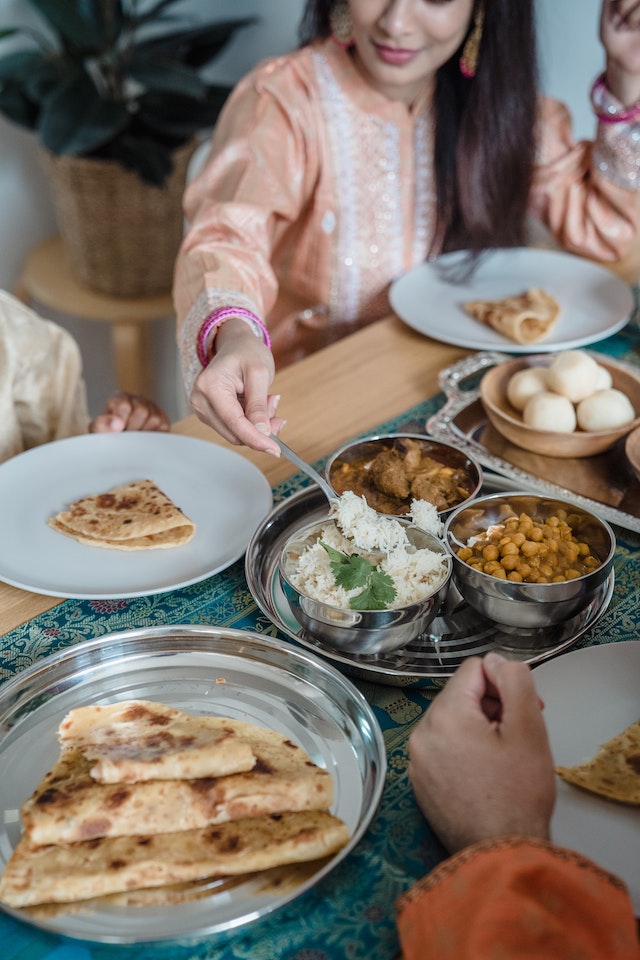
The last little detail of newly ground dark pepper and new curry leaves are the vital components of Kerala Breakfast Items Kerala egg curry. Obviously, the thick coconut milk loans the curry a velvety sauce and a powerful smell and flavor.
Kerala Style Ghee Rice
Ghee Rice (Nei Choru, Neychoru) is a Kerala-style rice dish where rice is cooked with bunches of ghee and flavors. This dish is wonderful to act as a side dish with your regular dinners. This is the way to make it (veggie lover, sans gluten).
About Ghee Rice
Kerala Breakfast Items Ghee Rice (Nei Choru, Neychoru) is a flavourful one-pot Kerala-style rice dish that is made utilizing white rice, ghee, and a couple of flavors. It is particularly well known in the Malabar area of Kerala.
This basic rice dish meets up rapidly utilizing a couple of straightforward fixings. It is served for ordinary feasts, exceptional events, and celebrations with curries and lentils.
Fixings
Rice – This dish is generally made utilizing Jeera Samba rice (seeraga samba rice). It is short-grain rice and is exceptionally tasty. Having said that, I like to make it with long-grain basmati rice or even sona masuri rice.
Ghee – This is the key fixing that adds a decent smell to this dish. Utilize the best quality ghee for the best taste and flavor.
Flavors – You will require sweet-smelling flavors like green cardamoms (Green elaichi), cinnamon (Dalchini), dark peppercorns (kali mirch), and cloves (Laung). Daintily smash them in a mortar and pestle for the best character.
You can likewise add a sound leaf, cumin seeds, fennel seeds, and star anise to this recipe.
Others – You will likewise require onions, green chilies, cashew nuts, raisins, salt, and water.
Change the green chilies according to what you would prefer. Assuming making it for youngsters, you can skip them as well.
Instructions to Make Ghee Rice
Flush 1 cup of white rice with water 2-3 times until the water runs clear. Absorb it in 4-5 cups of water for 30 minutes.
Heat 3 tablespoons of ghee in a skillet over medium intensity.
When the ghee is hot, add 5-6 entire cashew nuts and sear until they are light brown in variety. Mix much of the time while searing.
Presently add 10-12 raisins to the skillet and cook until they are full.
Eliminate the cashew nuts and raisins to a bowl and keep them to the side.
Add
- 1-inch piece of cinnamon stick
- 2 entire green cardamoms
- 2-3 cloves
- 2-3 entire dark peppercorns
- what’s more, let them snap for 3-4 seconds.
- Add ½ cup of meagerly cut onions to the container and broil until they become a brilliant shade of brown in variety (4-5 minutes), mixing much of the time.
Channel the water from the rice and add it to the container alongside 2-3 green chilies (cut into half), 2 cups of water, ½ teaspoon salt, and seared cashews and raisins. Mix delicately.
Diminish the intensity to low.
Cover the container with a tight-fitting top and cook undisturbed for 20-25 minutes until all the fluid is consumed and the rice is cooked well.
Eliminate the container from the intensity and let it rest for 5 minutes.
Cushion the rice tenderly utilizing a fork and serve hot. You can likewise embellish the rice with coriander leaves.
Drumstick and Potato Korma
A nutritious and delectable side dish for dosa, idli, chapati, or even with rice. Basically the same as Sagu, the blended vegetable curry.
Fixings:
- Kerala Breakfast Items Drumstick – 2
- Potato – 2 medium estimated
- Onion – 1 medium estimated
- Tomato – 2 medium estimated
- Green chilies – 3 (acclimate to taste)
- Ginger – 1/4 inch piece
- Garlic – 1 clove
- Sound leaf/Tej patta – 1
- Cloves – 2
- Cardamom – 1
- Coriander powder – 1 tbsp
- Turmeric powder – 1/4 tsp
- Curry leaves – 1 twig
- Coconut powder/coconut milk – 25 mg
- Water – Case by case
- Coconut oil – 1 tbsp
- Planning Time: 10 mins
- Cooking Time: 30 mins
Serves: 2
Technique: Strip the potatoes and cleave them into little 3D squares. Strip the drumstick. You may simply scratch to eliminate the green external part. The hard shell can remain. Cleave into 2-inch long pieces.
Strip and slash the onions finely. Strip and squash the ginger, garlic, and green chilies into a coarse glue. Slash the tomato pieces finely.
Add coconut oil to a wide-lined skillet. Add the squashed ginger, garlic, and green chilies glue as well as the entire flavors (cardamom, cove leaf, and cloves). Saute until the crude smell vanishes. You might decide to eliminate the entire flavor after the flavors are delivered.
Add the finely cleaved onion pieces and curry leaves. Saute.
Add cleaved tomato pieces. Saute until you see oil leaking out.
Add coriander powder. Saute and cook for 2-3 minutes.
Add cleaved potato and drumstick pieces. Mix. Add some water. Void one bundle of coconut milk powder into one cup of water to make meager coconut milk. Add this to the vegetables.
Close with a cover and cook for 10 minutes blending incidentally until the sauce thickens and the potatoes and drumsticks look very much cooked.
Add the salt, cover, and cook for 2 additional minutes. Whenever wanted, you can blend one more 25 gms of coconut milk powder in warm water to make some thick coconut milk and add this thick coconut milk to the dish. This is discretionary. Eliminate fire. Decorate with newly ground pepper, whenever wanted.
Instant Amla/Gooseberry Pickle (Kerala Style)
I have been encountering hair fall as of late regardless of no clear eating regimen/way of life change. Thinking about how to handle this, I have chosen to take a stab at including gooseberry/amla in my everyday eating regimen. Amlas are viewed as fantastic for well-being and are loaded with nutrients. I hate crude gooseberries but rather love them in murabba (sugar-coated sweet protect) or pickle. This pickle variant purposes next to no oil and can be consumed right away albeit the taste and flavors will generally be better following two or three days.
Fixings:
- Gooseberry/Amla – 10
- Red bean stew powder – 1 tbsp
- Asafoetida/Hing powder/piece – 1/4 tsp or 1 little piece (the size of a portion of a marble)
- Fenugreek seeds – 1 tsp
- Sesame/until oil – 1 + 1 tsps
- Mustard seeds – 1/2 tsps
- Curry leaves – 3-4 leaves
- Salt
- Planning Time: 10 mins
- Cooking Time: 20 mins
- Makes – 1-1/2 cups
Strategy:
Heat a thick iron wok and dry a dish of fenugreek seeds until they change the tone and you get the smell of cooked fenugreek seeds. In the event that you are utilizing the entire asafetida, broil that alongside the fenugreek seeds too. Powder the fenugreek seeds and asafetida piece utilizing a mortar and pestle (or blender). Put away.
Wash the gooseberry and wipe it off.
Heat a thick iron wok and add 1 tsp of sesame oil. Add the gooseberry to the oil. Mix every so often and cook at medium intensity until the white gooseberries turn delicate and delicate (around 15 minutes).
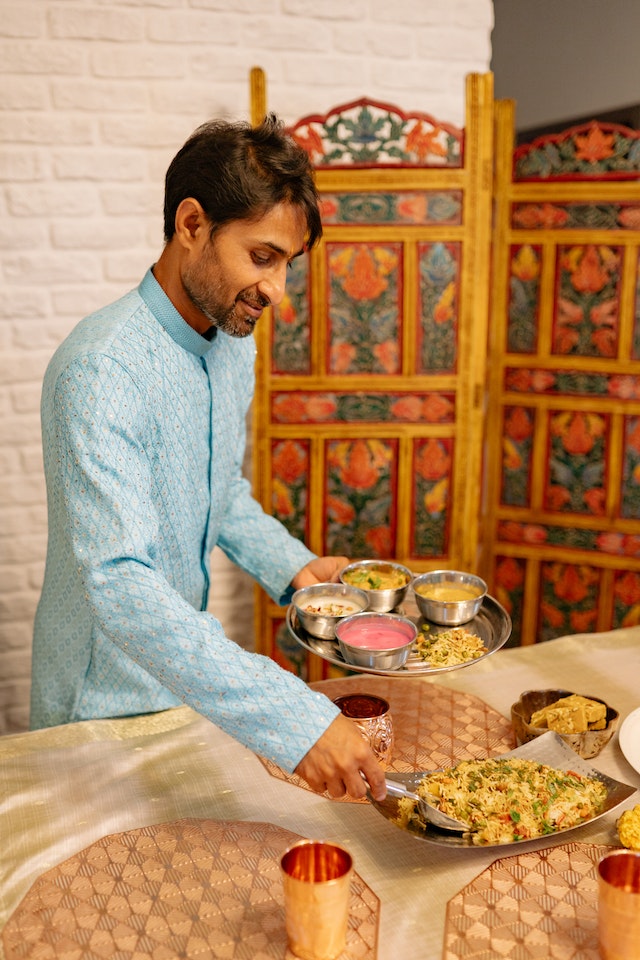
Eliminate gooseberry from the kadai. The oil used to cook the gooseberry stays in the kadai. You can utilize this again for the tadka. At the point when it cools, cut the gooseberry into more modest pieces and add salt. Blend well and keep to the side.
Add one tsp sesame oil into the very iron wok that was utilized to cook the gooseberry. Heat the wok and add mustard seeds to the oil. Allow it to splutter.
After the mustard seeds splutter, add the curry leaves, red stew powder, powdered simmered asafoetida and fenugreek, and salt as required, and blend well.
Switch off and permit it to cool.
Move to a dry earthenware container (bharani) or glass container. Steel and plastic holders are not suggested since the pickle is acidic in nature. Refrigerate and use inside 1 fourteen days. Eliminate little clumps for day-to-day use. Continuously utilize a dry spoon to serve the pickle.
Notes: You could utilize entire asafetida pieces for this recipe, however, this would require a significant stretch of time to liquefy and mix in with the amla pieces. Albeit entire asafetida is more tasty and fragrant than the powder, for a moment pickle asafetida powder is suggested.


